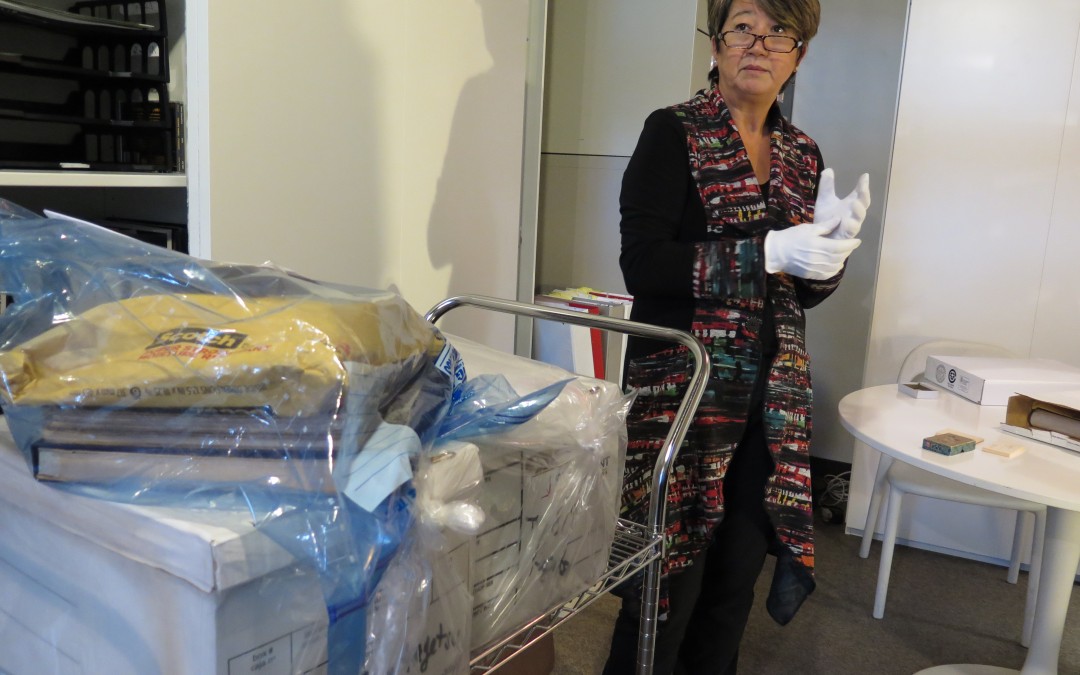NNM archivist Linda Kawamoto Reid stands beside items from the newly acquired Kagetsu collection. The items are wrapped in plastic to avoid the spread of contaminants to other archival material. Photo credit: Kaitlin Findlay with the Nikkei National Museum archival collection.
Sherri Kajiwara and Linda Kawamoto Reid from the Nikkei National Museum (NNM) didn’t know what they would find as they traveled to North Carolina this past October. They were taking advantage of a rare window in their schedules to meet with Kay Kagetsu, daughter-in-law of Eikichi Kagetsu, the pre-war Vancouver Island lumber baron. Kay, her son Nolan and daughter Naomi were donating a decade’s worth of her husband Jack’s research findings and various family heirlooms. Still, Sherri and Linda were nervous. It was an invaluable donation if intact but the Kagetsu’s home had flooded during a storm a few years earlier and there was a risk the collection was too damaged for the museum to take on.
When they opened the boxes in Kay’s home that afternoon, they breathed a lucky sigh of relief. The family had done a remarkable job drying out the collection and it was in much better condition than either Sherri or Linda expected. They spent three hours at Kay’s working through the material to determine what they could ship back to Vancouver and another two days to prepare the donation for safe shipment. Box after box, file after file, they uncovered intact treasures and returned to Vancouver with over 200 lbs. of materials.
The sight of mould and insects can make an archivist’s sweat run cold. When I visited the NNM that winter, I witnessed NNM’s Collections Manager Lisa Uyeda leap into action at the sight of a dead bug on the Kagetsu collection —tape wrapped around each finger—to pick up its bits and pieces.
Immediately upon return to Vancouver, Linda wrapped the acquisition in plastic bags to prevent any contaminant from spreading to other archival material. Shortly thereafter they transferred the collection to be stored in a freezer off-site, a common archival treatment for collections at risk from insect infestation or water damage.
Subjecting the remarkable collection to the deep freeze inhibited further mold growth and eliminated the risk of insects. It also allowed the NNM archival staff more time to find space for the collection in their holdings and accession the items at a controlled rate. Over the next year Linda and Lisa will work through the material, composing archival descriptions and photos, in the process of opening Jack Kagetsu’s research and the family’s heirlooms to the public.
It is this meticulous and patient labour that preserves our family, community, and national histories.
-Kaitlin Findlay

